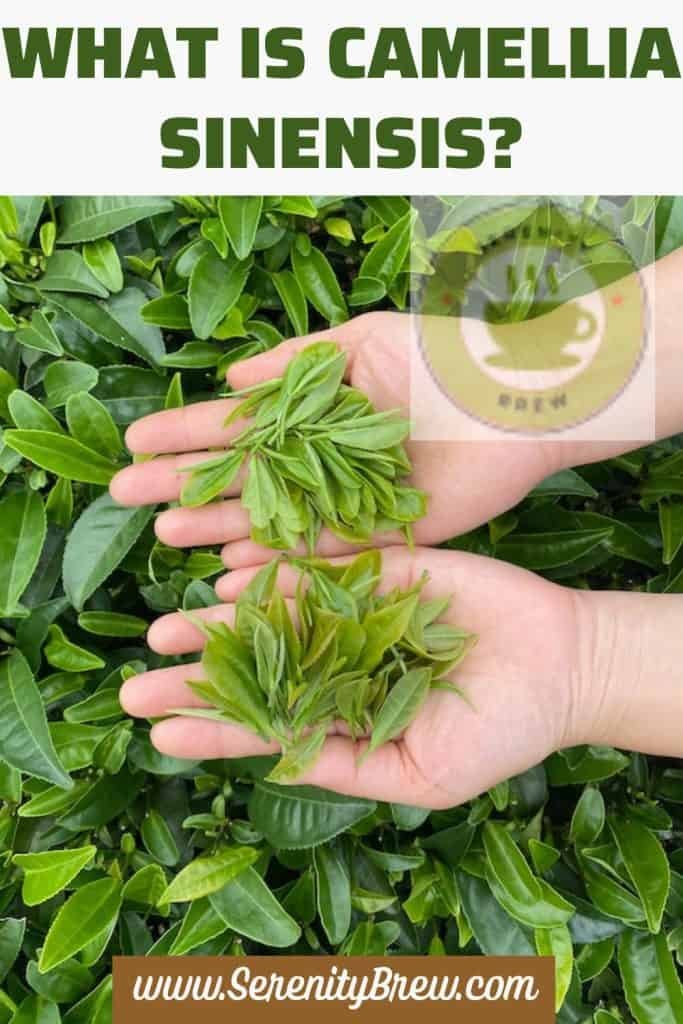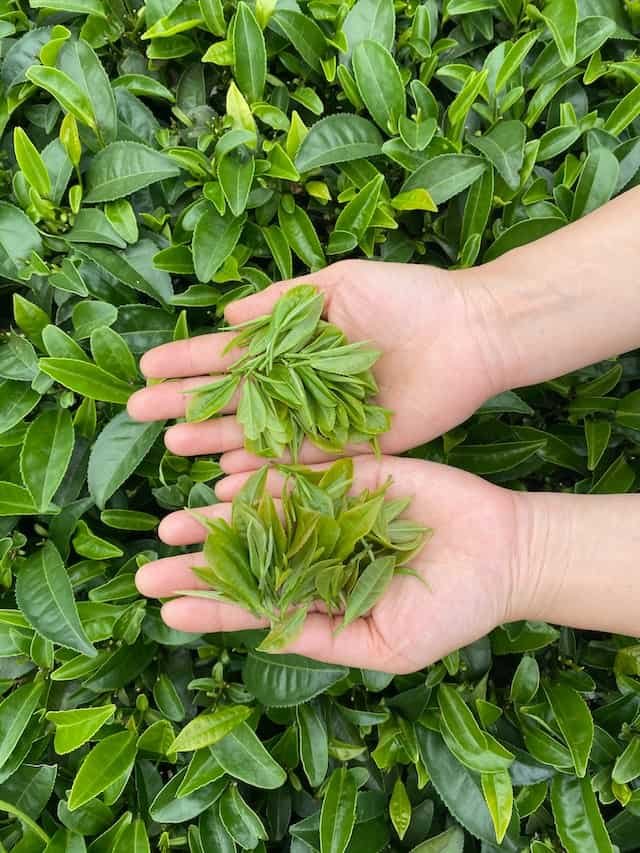
we always talk about black tea, green tea, White tea and blue tea but, what is behind all these denominations? The answer is simple: the camellia sinensis. Its leaves are bright green with closed edges. When the plant is allowed to flower, it produces small white flowers with bright yellow stamens, however, it is normally prevented from flowering during cultivation by leaf picking, forcing the plant to constantly make more buds.
The fruit that develops during flowering has a hard green shell with round brown seeds, which can be used to make tea oil.
The camellia sinensis exists in three varieties and two types of this plant are used for tea making, while the third is not normally used in tea cultivation.
Plant camellia sinensis is from China and is generally used to make green teas and white, but for the black teas and oolong teas also use this variety.
The camellia sinensis assamica is native to the Assam region of India. This plant is generally used for black tea and also for pu’erh tea in Yunnan province (China), since ancient tea trees belonging to the assamica variety can be found there.
The third variety is Camellia sinensis cambodiensis or also called the “Java bush”. Many varieties of tea have been bred and crossed to achieve certain traits in other crops, the “Java Bush” variety is not typically used in commercial tea production, and today there are approximately 1,500 varieties derived from the two main varieties.
Camellia sinensis sinensis (China)
Plant Camellia Sinensis sinensis from China grows best in cool temperatures on steep mountain slopes, at altitudes up to 3,125 meters, due to climate and altitude. The China plant usually grows between 1.5 and 4.5 meters in height , but in the case of wild plants the leaves can reach up to 5 cm in length.
Seasons in the mountains are shorter and growth is impacted. Produces a smaller crop, but with more young leaves that produce a sweet, less astringent cup.
The China plant is typically pruned from the waist up and this allows for easier harvesting and new growth, but due to the climate the growing season is at most half the year and the plant generally produces no more than five crops ( pluckings) in a year.
The China plant is dormant during winters, because during that time the plant stores its energy and nutrients for the first flush, which is among the best teas on earth with the highest concentration of desirable flavors and essential elements that the teas provide. health benefits in tea.
Camellia Sinensis assamica (Assam, India)
Camellia sinensis assamica is originally from the region of Assam, in eastern India as high humidity combined with generous rainfall and warm temperatures allow this variety to grow larger and thus create a stronger tea that thrives.
The assamica plant grows between 9 and 18 meters if not corrected and produces much larger leaves (up to 20 cm). Under perfect conditions with proper fertilization, the assamica plant can be harvested every 8 to 12 days throughout the year and, due to its huge yields, is the preferred variety in North East India, Sri Lanka and Africa.
The unique climate in Sri Lanka allows harvesting of this hardy shrub throughout the year. The assamica leaf is ideal for producing strong teas, with malty and black flavors. Other Chinese teas require longer production, such as oolong and pu’erh, but are also made from the larger leaves of the assamica plant.
Camellia Sinensis: varieties
Darjeeling is the northernmost district in North India in Bengal. Darjeeling tea is often referred to as “Champagne of Teas” and is made from the Camellia sinensis sinensis variety, the Chinese variety of the tea plant. But unlike the tea of most of the rest of India, it is made from its native Camellia sinensis assamica.
Despite the generalization that black tea is always 100% oxidized, most Darjeeling black teas are like oolongs, not fully oxidized, while Darjeeling is mostly known for its black tea, oolongs and teas are also produced high quality greens. To qualify a tea as “Darjeeling”, the tea must be produced in one of the 87 gardens (tea estates) of tea in the Darjeeling district. Every year, the district produces about 10,000 tons of tea. There are different harvest seasons in Darjeeling and the flavor changes throughout the year and that is why we chose two different black Darjeelings (first flush and second flush) to taste them. You have the best organic teas.
Properties of Camellia Sinensis

The properties of Camellia Sinensis are found in the same properties of tea, because like other teas, it is a drink that is very rich in antioxidants and flavonoids.
Preparing a Camellia Sinensis infusion or tea is quick and easy if you do it with organic teas. You will be enjoying the flavor, the aroma and the healthy nature of organic tea.
